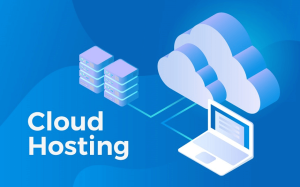Tips to Keep your Mobile Workforce Productive

Today’s workforce has evolved beyond the office. COVID-19 has brought remote working into the spotlight. Keeping teams in the field at their most productive is easy with prioritised mobile job management. HR managers need to consider new strategies in place to accurately measure and improve mobile workforce productivity. In all its varied forms, remote work has become much more than an add-on to conventional business practice. A little under half of US employees who work remotely do so full time, according to Gallup’s latest State of the American Workplace Report. Managing and planning a mobile workforce is made troublesome when an organization is utilizing a manual procedure. The promotion of the mobile workforce has been cloud computing technology. Cloud and mobile solutions give people the ability to work anywhere. Cloud consultancy services ensure success for the company that delivers dynamic hybrid cloud capabilities. The most straightforward approach to support worker productivity is by replacing these manual tasks with advanced and digital options. Modern productivity and communication tools permit the mobile workforce to monitor individual performance just as that of the group and get knowledge into challenges that influence productivity utilizing dashboards. One of the tips to help build a highly productive software development team remotely is to make an effort to hire the right individuals. For that a software development outsourcing company can help you. Some of the tools that help to maximise business performance and mobile productivity are:
Digital workforce management
Workforce management (WFM) is the process of strategically optimizing the productivity of employees to ensure that all resources are in the right place at the right time. In most cases, the digital workforce will not be a physical embodiment of a digital worker. Rather a virtual robot (software) that will be either working in the background or accessed by consumers and co-workers through a command based interface. Digital workforce management is reforming the manner in which organizations are organizing mobile workers – permitting employees to work in quicker, more secure and more effective ways than ever before. It fundamentally cuts down the administration trouble on back-office staff and decreases motoring costs as workers no longer need to drop off or gather paperwork.
Cloud communications
The present cloud communications solutions empower organizations of all sizes to enjoy next generation communications and joint effort, without the expense and complexity of a premise-based PBX. Thanks to cloud computing services, users can check their email on any computer and even store files using services such as Dropbox and Google Drive. Cloud communications empower you to convey the consistent experiences that your workers and your clients presently expect, and offer tremendous potential to improve mobile productivity.
Microsoft Teams
Microsoft Teams is a proprietary business communication platform developed by Microsoft, as part of the Microsoft 365 family of products. As COVID-19 continues affecting organizations over the world, Microsoft Teams goes about as a central hub for teamwork, offering a plenty of remote collaboration capabilities to keep the mobile workforce incredibly beneficial. Employees can contact peers utilizing the chat features, have sound/video discussions with groups, and team up on reports in real time.
Author Bio – Ben is a technical writer at Nuvento. It’s an enterprise software development company in the US. He enjoys telling about tech innovations and digital ways to boost businesses.






